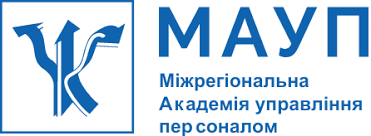MODELING OF AN INFORMATION AND ANALYTICAL SYSTEM FOR MONITORING GENDER EQUALITY IN HIGHER EDUCATION INSTITUTIONS
DOI:
https://doi.org/10.32689/maup.it.2025.1.27Keywords:
gender equality; information and analytical system; monitoring; UML diagramsAbstract
In the modern world, the issue of gender equality is becoming increasingly important. In particular, in higher education institutions, gender equality is a fundamental aspect that affects the quality of education, the motivation of scientific and pedagogical staff, as well as the general moral and psychological climate in institutions. One of the main challenges facing modern universities is to ensure equal opportunities for all employees regardless of their gender. This includes equal access to academic and professional development, equal working conditions, fair distribution of resources and opportunities for career growth. Objective development of an information and analytical system for monitoring gender equality in higher education institutions using UML diagrams, which allows to increase the efficiency of gender equality assessment among the teaching and research staff. Methodology use of uml (unified modeling language) for designing the structure and functionality of the iamgm. Application of formalization and algorithmization methods to analyze, refactor and transform uml diagrams and determine the structural complexity of the system through the number of classes, interfaces and connections. Visualization of system components and identification of key classes (candidate, vacancy, selection criteria, etc.). Scientific novelty a formal approach to the design of iasmg with regard to gender neutrality is proposed. An objective function for optimizing the structure of uml-class diagrams is introduced. A set of semantically equivalent transformations of uml-diagrams is defined to reduce gender bias and the need to use software for factoring uml-diagrams in multi-institutional systems is substantiated. The implementation of such systems is important not only for ensuring fairness and equal opportunities, but also for increasing the overall efficiency of higher education institutions. Studies show that gender inequality can lead to lower labor productivity, reduced employee engagement, increased stress and conflicts in the work environment. Universities that neglect gender equality issues risk losing competitiveness and high-quality personnel. Another important aspect is the impact of information technology on the process of managing gender equality. In particular, an important tool in the process of developing and implementing such systems is UML (Unified Modeling Language). The use of UML diagrams allows you to create standardized models that are easily understood by all participants in the development process, which increases the quality of the system and reduces the risk of errors. The implementation of such models is important in conditions where the gender equality monitoring system must be integrated into the overall university management structure and must meet the requirements of various stakeholders. Conclusions uml diagrams are an effective tool in the development of the iamgm architecture. It is necessary to focus on visualization of analytical information on gender equality. The research prospects are to scale the system to process large amounts of data, as well as to adapt the iamgm to changes in the requirements and needs of users.
References
Anderson J. The Impact of Gender Inequality on Work Efficiency in Educational Institutions. Journal of Gender Studies, 2018. 15(2), 123–145.
Brown L. Negative Effects of Gender Discrimination on Employee Motivation and Engagement. International Journal of Human Resource Management, 2019. 28(3), 256–278.
Cavique L., Cavique M., Mendes A., Cavique M. Покращення проектування інформаційних систем: використання UML та аксіоматичного проектування. Computers in Industry, 2022. 135, 103569.
Computer Support System for Choosing the Optimal Managing Strategy by the Mutual Investment Procedure in Smart City / Lakhno Valeriy, Malyukov Volodimir, Roskladka Andrii, Rzaieva Svitlana, Gamaliy Volodymir, Valeriy Kraskevich, and Olha Kasatkina. Advances in Intelligent Systems and Computing. 2020. Volume 1194, pp. 278–288. DOI: 10.1007/978-3-030-50454-0_26
Costa C. A., Harding J. A., Young R. I. Застосування UML і відкритого розподіленого процесу до проектування інформаційних систем. Computers in Industry, 2001. 46(1), 33–48.
Green, P. Combining Quantitative and Qualitative Methods for Comprehensive Understanding of Gender Equality. Methodological Innovations, 2017. 14(1), 33–50.
Harris T. Enhancing System Clarity and Quality Through UML Diagrams. Journal of Systems and Software, 2019. 102, 45–63.
Herawati S., Negara Y. D. P., Febriansyah H. F., Fatah D. A. Застосування методу водоспаду в інформаційній системі управління управління професійним навчанням на базі Інтернету в Університеті Труноджойоо Мадура. У E3S Web of Conferences. 2021. (Vol. 328, p. 04026). EDP Sciences.
Johnson M. Real-Time Data Analysis for Gender Equality Monitoring in Universities. Journal of Educational Technology, 2021. 30(1), 78–95.
Lee S. The Importance of UML Diagrams in System Development. Software Engineering Journal. 2018. 25(6), 489–512.
Martin R. Regulatory Mechanisms for Ensuring Gender Equality in Higher Education. European Journal of Education Law and Policy, 2018. 21(2), 167–182.
Nickerson J. V., Corter J. E., Tversky B., Zahner D., Rho Y. J. Діаграми як інструменти в проектуванні інформаційних систем. In Design Computing and Cognitionʼ08: Proceedings of the Third International Conference on Design Computing and Cognition. 2008. (pp. 103–122). Springer Netherlands.
Smith A. Development and Implementation of Information-Analytical Systems for Monitoring Gender Equality. Information Systems Journal. 2020. 22(4), 345–367.
White K. Legislative Initiatives and Their Impact on Reducing Gender Discrimination. Journal of Legal Studies. 2016. 19(3), 203–220.





